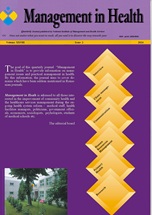Abstract
Communication begins with the first contact and extends throughout the
entire visit, and it is important for the dentist to use both verbal and non-verbal
communication, creating a safe and accessible environment. Explaining
procedures in simple language helps reduce anxiety and promotes collaboration.
Non-verbal communication (gestures, facial expressions, eye contact) plays a
significant role in patient comfort, especially for those who are anxious or have
special needs. It also allows for the detection of signs of discomfort or pain,
adjusting treatment in real time. Empathy, respect for patient rights, and
awareness of cultural differences are essential for building a relationship of trust.
The cross-sectional study conducted in Timiș County highlighted that patients
perceive communication as effective, but there are differences in the facial
expressions and listening skills of medical staff. The results show that most
patients are satisfied with dental treatments and would recommend the services to
others. The conclusion is that improving nonverbal communication can
contribute to more effective and comfortable care, especially for patients with
anxiety or language barriers.

